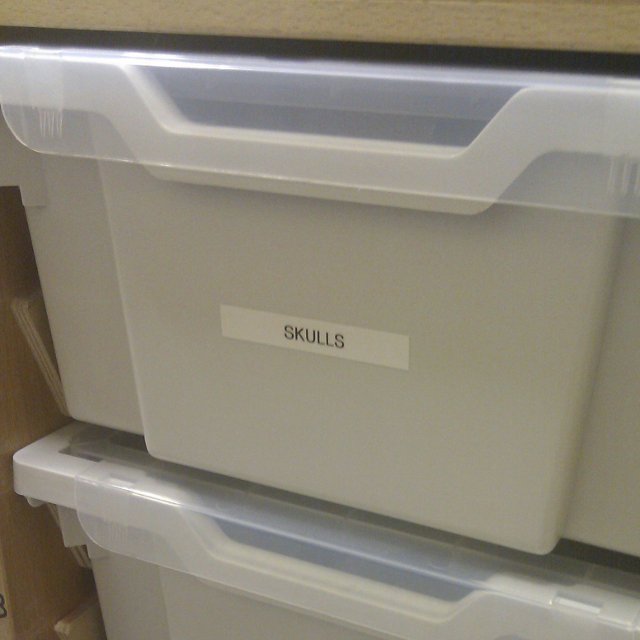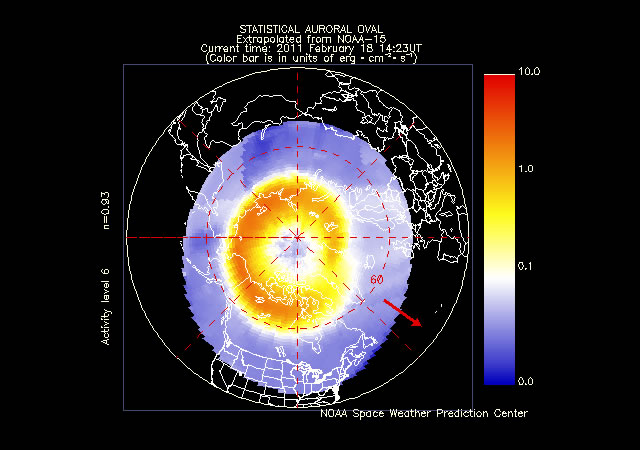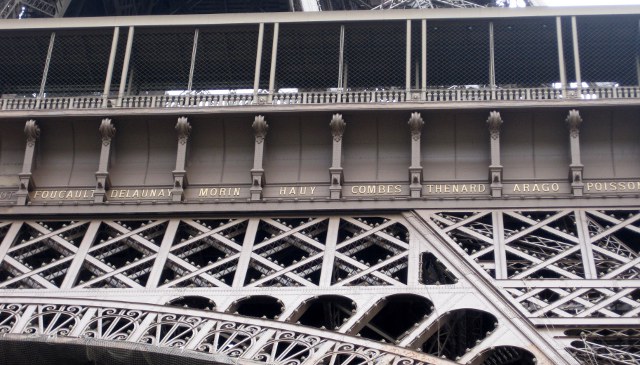Sometimes it’s very hard to beat working in a school.
Like when you find a drawer labelled “SKULLS”.

Sometimes it’s very hard to beat working in a school.
Like when you find a drawer labelled “SKULLS”.

A sunspot is an area of intense magnetic activity on the surface of the Sun (the photosphere) that causes it to decrease in temperature and darken.

One particular sunspot (imaginatively named “Active Region 1158”, shown above) has been growing in size over the past week and is now wider than the planet Jupiter. At 0156 on Tuesday morning an enormous X-class solar flare, the largest and most powerful type, erupted from AR1158. This was the Sun’s first X-class flare for more than four years.
 The X-class flare shown in an image taken by NASA’s Solar Dynamics Observatory at 193Å.
The X-class flare shown in an image taken by NASA’s Solar Dynamics Observatory at 193Å.
The flare was accompanied by a coronal mass ejection (CME), a plasma of highly energetic electrons and protons propelled outwards at great speed. This CME travelled towards Earth at about 900 kilometres per second and will strike the atmosphere at about 0100 on Friday morning.
Update (2011‑02‑18): the “blow” from the CME seems to have been fairly glancing and will therefore not impact as severely as thought. The solar wind speed on impact has been about 500-600 km/s, peaking at around 700 km/s for brief periods of time.
There is still the risk of further, less powerful, M-class flares from AR1158 in the future.
A CME is essentially a more powerful version of the solar wind. It is the collision of the solar wind and the Earth’s magnetic field that produces aurora (aurora borealis in the northern hemisphere and aurora australis in the southern hemisphere). It is possible, though unlikely, that the increased strength of the solar wind due to the CME from AR1158 will mean that the aurora borealis can be seen from the UK, especially at higher latitudes (e.g. the Hebrides or Shetland Islands) where the Earth’s magnetic field is stronger.
Update (2011‑02‑18): the current NOAA POES auroral oval clearly shows (top-right quadrant) that there is almost no chance of visible aurora anywhere in the UK.

Previously:
I overheard one pupil tell another yesterday morning that:
“The air in a cylinder that contained the Eiffel Tower
would weigh more than the Eiffel Tower itself.”
It sounded feasible, but I wanted to check the maths.
The metal structure of the Eiffel Tower has a mass of 7300 tons, or 7.3 million kilograms. The design of the tower is very space-efficient: if you melted down the pure iron* that it is made of, it would occupy a volume of only 930m3, equivalent to a sphere with a radius of just six metres.

The Eiffel Tower is 324 m tall and sits on a square base with sides of 125 m. It would therefore fit inside a cylinder with a radius of 88 metres, giving the cylinder a volume of just under eight million cubic metres. This much air would have a mass of 10 million kilograms.
So yes, that pupil was telling the truth. The air contained in a cylinder that could hold the Eiffel Tower would be 2.7 million kilograms heavier than the Eiffel Tower itself.
I am particularly fond of the Eiffel Tower as it lists, around its base, the names of seventy-two important French scientists, mathematicians and engineers, including Ampère, Arago, Becquerel, Daguerre, de Coulomb, Foucault, Fourier, Fresnel, Gay-Lussac, Lagrange, Laplace and Poisson.

* More accurately, the tower is made from puddled iron, a type of wrought iron that has a density of 7850 kg/m3.
There has been a lot of discussion [Guardian, BBC, Telegraph] in the media recently about how a student’s choice of A Levels affects their chances of securing a place at University. It has been suggested – frequently – that there is a “secret” list of subjects that are considered “hard” and therefore worthwhile, and those that are considered “soft” and therefore not worthwhile.
The Russell Group of universities, which includes Oxford, Cambridge, and my alma mater, King’s College London, has recently released a guide for students called Informed Choices. It is one of the ugliest and most difficult-to-read documents I have ever come across, so I have summarised below what I think is the most important advice.
The guide lists “facilitating subjects” that are “required more often than others” for entry to university:
“By choosing facilitating subjects at advanced level, you will have a much wider range of options open to you at university. An A Level qualification in any facilitating subject will keep open to you a number of degree courses.”
The list of facilitating subjects consists of physics (of course), chemistry, biology, maths and further maths, english, geography, history and classical and modern languages. The guide goes on to warn that:
“If you decide not to choose some of the facilitating subjects at A Level, many degrees at competitive universities will not be open to you.”
On the subject of “hard” and “soft” subjects, the guide has this to say:
“In general, subjects referred to as being ‘hard’ are more traditional and theoretical subjects, for example: English, History, Physics and Chemistry. In fact all the facilitating subjects listed earlier can be considered ‘hard’ with the addition of others such as Economics and Politics. ‘Soft’ subjects are usually subjects with a vocational or practical bias, for example: Media Studies, Art and Design, Photography and Business Studies.
“If you plan to take more than one perceived ‘soft’ subject, some caution may be needed.”
The University of Cambridge published its own list of “soft” subjects a couple of years ago. It included accounting, art and design, business studies, communication studies, dance, design and technology, drama and theatre studies, film studies, health and social care, home economics, ICT, leisure studies, media studies, music technology, performance studies, performing arts, photography, physical education, sports studies and travel and tourism on a list of subjects that it considered “less than ideal”.
There is a section in the Russell Group’s guide entitled Subjects Required for Different Degree Courses. I did a quick totting-up of the subjects listed as “Essential” and whilst I was hoping that Physics would come in in first place, I’m happy to settle for the Silver Medal.
(I took to using “MPBC” as shorthand, due to the frequency with which that four-subject combination came up.)
Update: Tom Hartley has a better graph than mine.
 (A guest post from Leila Johnston.)
(A guest post from Leila Johnston.)
It’s almost exactly 25 years since one of the most tragic incidents in the history of space flight. Mission STS-51-L was to be the 25th Space Shuttle mission, an event surrounded by tremendous excitement and optimism. Children around the world knew that a schoolteacher was on board – a thrilling prospect that made the whole thing so much more human. But Sharon Christa McAuliffe never made it into space. With the world watching, the craft disintegrated just 73 seconds after launch, and all seven crew members perished in a twist of smoke. The story of Challenger is so tragic that it still feels very difficult to even look at the pre-flight footage or publicity shots. It was also avoidable.